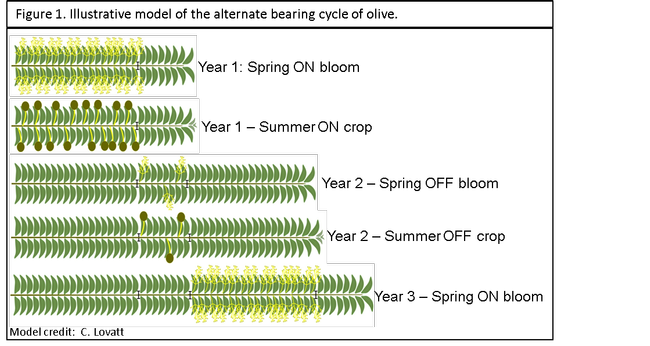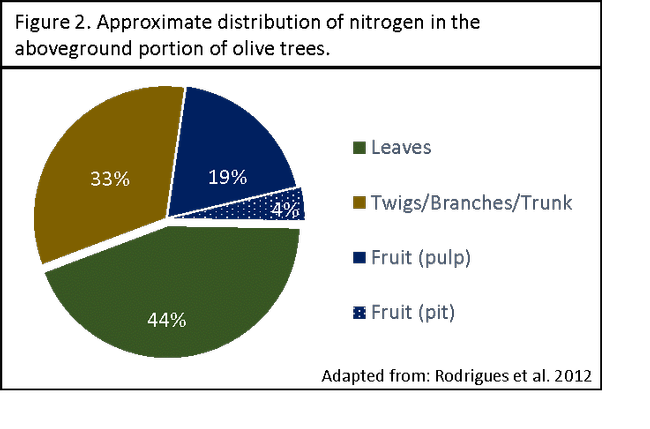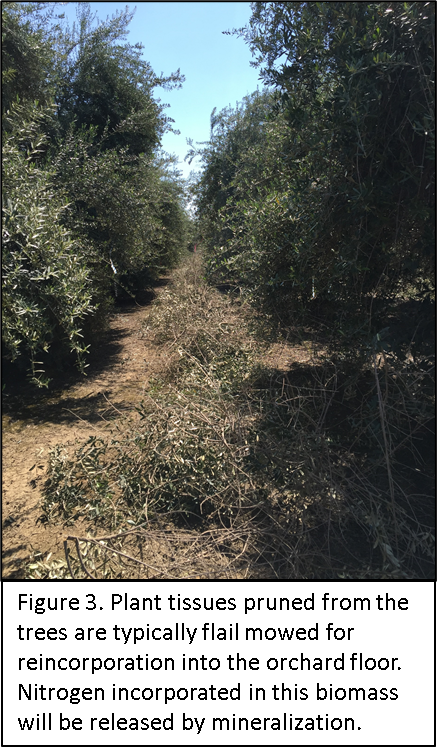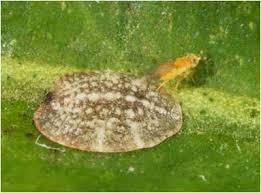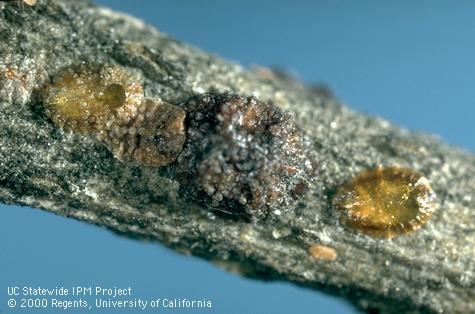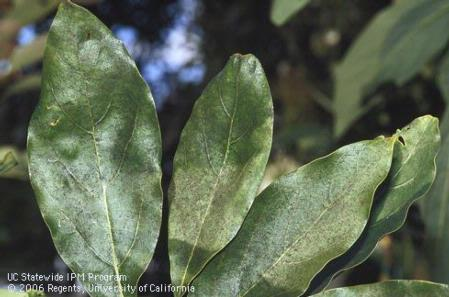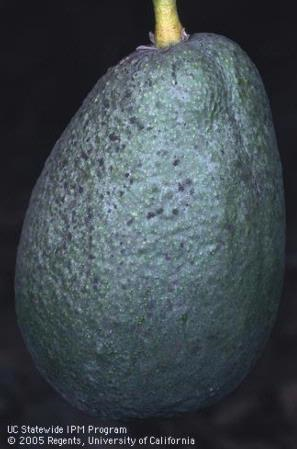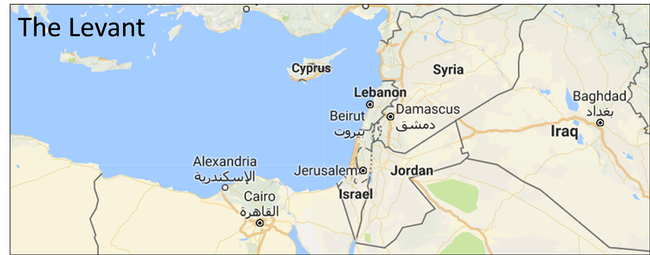Developing a nitrogen fertilizer plan for olive orchards
Elizabeth J. Fichtner, Farm Advisor, UCCE Kings and Tulare Counties
Nitrogen management plans (NMP) for California olive orchards are essential for the Irrigated Lands Regulatory Program and can increase net return. A good NMP has the potential to increase yield, improve oil quality and mitigate biotic and abiotic stresses while reducing nitrogen losses from the orchard.
Olives differ from other orchard crops in California in that they are both evergreen and alternate bearing. Individual leaves may persist on the tree for two to three years. Leaf abscission is somewhat seasonal, with most leaf drop occurring in late Spring. Rapid shoot expansion occurs on non-bearing branches during the hottest part of the summer (July-August) on ‘Manzanillo' olives in California. The fruit on bearing branches limits current season vegetative growth. Olives bear fruit on the prior year's growth, and the alternate bearing cycle is characterized by extensive vegetative growth in one year followed by reproductive growth the following year (Figure 1). With bloom occurring in late April to mid-May, fruit set can be estimated in early July, allowing for consideration of crop load while interpreting foliar nutritional analysis in late July-early August.
Critical Nitrogen Values. Foliar nitrogen content in July/August should range from approximately 1.3-1.7% to maintain adequate plant health. The symptoms of nitrogen deficiency manifest when foliar nitrogen content drops to 1.1% nitrogen. As leaves become increasingly nitrogen deficient, foliar chlorosis progresses from yellow/green to yellow. Leaf abscission is common at nitrogen levels below 0.9%. Nitrogen deficiency in olive is associated with a reduced number of flowers per inflorescence, low fruit set, and reduced yield.
Excess nitrogen (>1.7%) adversely affects oil quality. Oil with low polyphenol concentration is associated with orchards exhibiting excess nitrogen fertility. Since polyphenols are the main antioxidant in olive oil, reduced polyphenol levels are associated with reduced oxidative stability.
Nitrogen content may impact orchard susceptibility to biotic and abiotic stresses. For example, while excess nitrogen content has been associated with increased tolerance to frost prior to dormancy, in spring (post-dormancy) it is associated with sensitivity to low temperatures. High nitrogen content has also been associated with increased susceptibility to peacock spot, a foliar fungal disease on olive.
Foliar Sampling for Nitrogen Analysis. By convention, foliar nutrient analysis is conducted in late July-early August in California. Fully-expanded leaves are collected from the middle to basal region of the current year's growth at a height of about 5-8 feet from the ground. To capture a general estimate of the nitrogen status of the orchard, samples should be taken from 15-30 trees, with approximately 5-8 leaf samples collected per tree. Leaves for analysis should only be collected from non-bearing branches. Growers may find it beneficial to make note of the ON and OFF status in the historical records of each block. The orchard bearing status, combined with anticipated yield and foliar analysis will guide decisions for nitrogen applications the following year.
Distribution of nitrogen in the olive tree. Over 75% of the aboveground nitrogen in the olive tree is incorporated in the vegetative biomass (Figure 2). The twigs, secondary branches, main branches, and trunk account for approximately 33% of aboveground nitrogen (Figure 2). Twenty-three percent of the aboveground nitrogen is harbored in the fruit, with the majority in the pulp (19%) (Figure 2). Fruit is only an important nitrogen sink during the initial phase of growth. As fruit size increases, the N concentration decreases due to dilution.
Estimation of nitrogen removed from the orchard. The easiest component of orchard nitrogen loss to estimate is the nitrogen in the harvested fruit. A ton of harvested olives removes approximately 6-8 lbs of nitrogen from the orchard. The quantity of nitrogen in the fruit varies slightly between olive varieties (Table 1). Growers can use the Fruit Removal Nutrient Calculator for Olive on the California State University, Chico (CSU Chico) website to gain estimates of N removal by the three oil varieties (Arbequina, Arbosana, and Koroneiki), and the Manzanillo table olive. This tool was developed by Dr. Richard Rosecrance (Professor, CSU Chico) and Bill Krueger (Farm Advisor, UCCE). To access the Fruit Removal Nutrient Calculator for Olive, visit the following URL:
http://rrosecrance.yourweb.csuchico.edu/Model/OliveCalculator/OliveCalculator.html
Pruning may generate a second component of nitrogen loss from orchards. The best practice to mitigate nitrogen loss from pruning is to reincorporate the pruned material into the orchard floor by flail mowing. The nitrogen in this organic material will gradually become available to the trees through mineralization.
In mature orchards, the wood removed by annually pruning is approximately equal to the annual vegetative growth. Consequently, the input and removal of nitrogen in vegetative growth is cyclic and almost equal in mature orchards. In young orchards, nitrogen inputs are utilized to support vegetative growth and little nitrogen is removed from the orchard in prunings or crop. During this time nitrogen must be supplied to meet the demand to support vegetative growth. It is estimated that approximately 2.5 lbs nitrogen is required to produce 1,000 lbs. fresh weight of tree growth.
Nitrogen Use Efficiency. Not all the nitrogen supplied to the orchard from fertilizer and other inputs (ie. organic matter, irrigation water) is utilized for tree growth and crop production. A fraction of nitrogen is lost from the orchard ecosystem through processes such as runoff, leaching, and denitrification. Efficiency varies among orchards, with some orchard systems exhibiting higher nitrogen utilization rates than others. The efficiency generally varies from 60% - 90%. Higher values denote more efficient use of nitrogen inputs. To estimate the amount of nitrogen to supply an orchard, the demand is divided by the estimated efficiency. For example, if nitrogen demand is 50 lbs. per acre and efficiency is estimated at 0.8, then 62.5 lbs. of nitrogen per acre should be applied.
Summary. Nitrogen management plans are site-specific and designed to meet orchard and crop demand while reducing environmental losses. Nitrogen utilization is never 100% efficient. Nitrogen use efficiency can be maximized by minimizing losses from irrigation and fertilization practices while utilizing foliar analysis and knowledge of alternate bearing status to fine-tune applications.
Select References:
Fernández-Escobar, et al. 2011. Scientia Horticulturae 127:452–454.
Hartman, H.T. 1958. Cal Ag. Pgs 6-10.
Rodrigues, M.A. et al. 2012. Scientia Horticulturae 142:205-211.
Posted on
Tuesday, May 18, 2021 at
8:51 AM
Focus Area Tags: Agriculture
We live in unusual times and every year is different, so we are bound to see things that are different, or see things differently. Recently a pest control advisor brought in a sample of what looked like black scale (Saissetia oleae) on the stems of avocado fruit. Along with the scale came a mess of Argentine ant and sooty mold. The PCA had not seen this scale on avocado before. It is common on citrus and, from the name, it is also found on olives and over 100 other host-plants. I hadn't seen it on avocado before, and became somewhat alarmed and sent samples off to UC Riverside for identification. I thought maybe there might have been an introduction of a new scale, riding on imported fruit. Joe Morse and crew from UCR had done a study monitoring fruit coming across the border and found several scales on fruit that were not currently in California:
http://entnemdept.ufl.edu/Hodges/als4161/Secure/PDF%20Files/Articles/AvocadoPhytosanitaryRisks.pdf
Back with the first infestations of Avocado thrips in 1996, PCA Charlie Gribble kept saying that he was finding citrus thrips in avocado. The avocado orchards where he found the thrips were next to a lemon orchard and we kept saying that the insect was probably just getting lost between the two orchards. Well it turned out, it wasn't citrus thrips, but an all new thrips previously undescribed that has gone on to cause a lot of disruption to the California avocado industry. And from here, avocado thrips has gone on to Israel and Spain to cause similar problems. It was better to find out sooner than later it this scale was something new.
I also put the word out to local PCAs and growers asking if they had seen “black scale” this year. The responses were interesting. One grower said that he had seen it occasionally on avocado trees for the last 30 years. They were on older trees and wood. They would be in small numbers in orchards some years and not others. Two PCAs said that they saw it occasionally on young trees, but they were usually parasitized, with wasp exit holes. One PCA said that the scale was only there when there were lots of ants present to fend off parasitic wasps.
Photos: parasitic wasp laying eggs and exit hole of young wasp from adult scale
And bingo, that was the case in this organic orchard with smaller trees. The Argentine ants were protecting the scale and the scale was thriving as evidenced by the sooty mold.
The black scale samples sent into Paul Rugman-Jones at UCR Entomology were identified as the scale Saissetia olea and that virtually all of them were parasitized by the Coccophagus rusti wasp. So it's not a new scale and it's under biological control.
Photos: Sooty mold on avocado leaves and fruit
Nice coverage of scales:
https://www.dialenvironmental.com/images/scales.pdf
http://ipm.ucanr.edu/PMG/r107301411.html
For a guide to the scales of California, big files and illustrations:
https://www.cdfa.ca.gov/plant/PPD/publications/tech_series.html
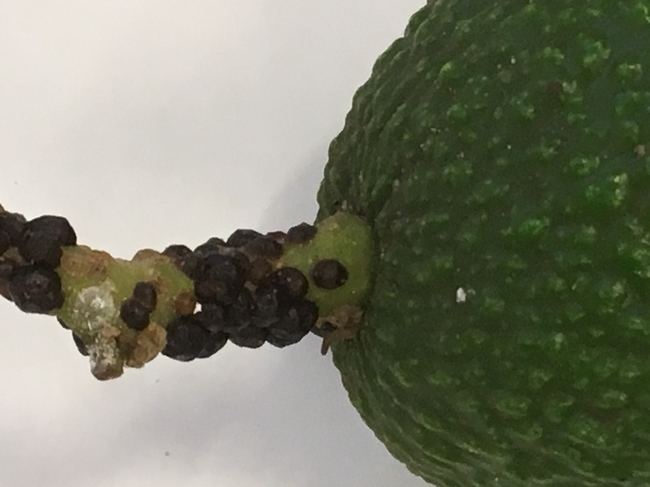
black scale avocado
Posted on
Monday, October 30, 2017 at
7:31 AM
Recent advances in understanding the history of olive domestication
Elizabeth Fichtner, Farm Advisor, UCCE Tulare and Kings Counties
|
Olives are thought to have first been domesticated in the northeastern Levant, an area near the border of present-day Turkey and Syria. Map captured from Google Maps.
|
With the emergence of the California olive oil industry, the state has witnessed a dramatic diversification in the olive cultivars grown commercially. Our mainstay black ripe olive industry, dominated by the ‘Manzanillo' olive, is now combined with increasing acreage of Spanish, Greek, and Italian cultivars used to create high quality, extra virgin oil. The historic table olive industry of California still represents around 18,000 acres of olives in the state, while approximately 40,000 acres are currently devoted to oil production.
Although olive cultivation in California is relatively new (dating back to the historic Spanish Missions established by Franciscan priests), olives are of key importance in the history and culture of the Mediterranean basin. A recent publication by a group of European, American, and North African scientists has re-evaluated the location of the domestication of the olive, providing genetic evidence that domestication occurred in the northeastern Levant, close to the present-day border of Syria and Turkey.
To complete the study, researchers collected plant material from nearly 2000 trees, sampling both wild oleaster populations and domesticated cultivars of olive. World Olive Germplasm Banks in Córdoba (Spain) and Marrakech (Morocco) served as sources of the majority of cultivars included in the study. Researchers utilized the genetic sequences of plastids (ie. chloroplasts) to discern differences between cultivars and wild oleaster populations. Plastids are organelles (structures inside cells) that contain their own DNA. Since plastids are generally inherited from one parent (similar to mitochondria), their genetic sequences are more conserved then that of nuclear DNA, which is contributed by both parents. Since olive is a wind-pollinated crop, nuclear DNA may be disseminated over large distances.
The genetic analysis of wild populations indicates three distinct lineages of olive: the Near East (including Cyprus), the Agean area, and the Straight of Gibralter. These three wild populations are likely linked to refuge areas where populations persisted through historic glaciation events. Interestingly, the geographic distribution of these three populations also corresponds to the subdivisions of the olive fruit fly, suggesting that these regions offered shared refuge habitat for both the host and the pest. The wild oleaster population in the eastern Mediterranean was found to be more diverse than previously thought and ninety percent of the present-day cultivars analyzed in the study matched this group. Common olive cultivars grown in California, including, Sevillano, Arbosana, Arbequina, and Koroneiki, all belong to this group originating in the eastern Mediterranean.
As a result of this study, it is proposed that the initial domestication of olive took place in the northeastern Levant; subsequently, plant material was disseminated to the whole Levant and Cyprus before being spread to the western Mediterranean. After these initial domesticated trees spread throughout the Mediterranean basin, they likely underwent subsequent domestication events by crossing with wild oleasters, thus introducing genetic material from the other two ancient western Mediterranean lineages.
Such studies may appear purely academic; however, they can also address more timely questions and assist in characterizing cultivars. For example, a 2010 study in California made genotypic comparisons between historic olive plantings in Santa Barbara, CA and at Santa Cruz Island, CA. The study elucidated that the olives on Santa Cruz Island, planted in the late 19th century are different than other historic olive plantings in Santa Barbara, CA. Olives planted at the Santa Barbara Mission in the late 18th century are the ‘Mission' cultivar, whereas those on Santa Cruz Island (Figure 3) are generally ‘Redding Picholine.' Interestingly, the olives on Santa Cruz Island are thought to have been planted for oil production, but there are no historic reports of harvest or sale of a crop. Additionally, the Santa Cruz Island olives have become somewhat invasive on the island due to their propensity to establish from seed. As a result of genotypic analysis of these populations and the fact that ‘Picholine' makes an excellent rootstock due to its ease of propagation from seed, it is hypothesized that the ‘Picholine' variety was intended as a rootstock, but the grafts never took. Consequently, maturation of a ‘Picholine' orchard may have just been an accident, a mistake, or simply bad luck. The completion of this local population genetics study may have helped explain the unsolved mystery of the historically unharvested trees on Santa Cruz Island.
Find Santa Cruz Island.
Besnard, G., Khadari, B., Navascués, M., Fernández-Mazuecos, El Bakkali, A., Arrigo, N., Baali-Cherif, D., Brunini-Bronzini de Caraffa, V., Santoni, S., Vargas, P., Savolainen, V. 2013. The complex history of the olive tree: from Late Quaternary diversification of Mediterranean lineages to primary domestication in the northern Levant. Proc R Soc B. 280: 20122833.
Soleri, D., Koehmstedt, A., Aradhya, M.K., Polito, V., Pinney, K. 2010. Comparing the historic olive trees (Olea europaea L.) of Santa Cruz Island with contemporaneous trees in the Santa Barbara, CA area: a case study of diversity and structure in an introduced agricultural species conserved in situ. Genet Resour Crop Evol 57:973-984.
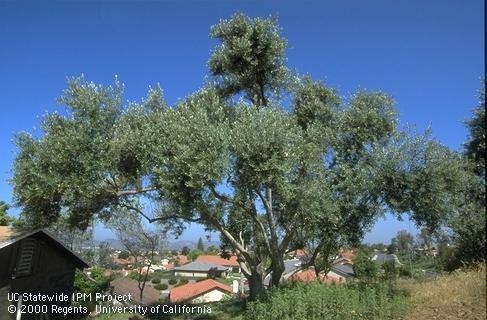
olive tree
Posted on
Monday, July 3, 2017 at
5:15 PM
- Author:
Elizabeth Fichtner
The latest edition of Topics in Subtropics newsletter is out, Elizabeth Fichtner as editor. Read on.
TOPICS IN THIS ISSUE:
-
Why has California red scale been so difficult to control?
-
Navel Orange Nitrogen Fertilization
-
Recent Advances in Understanding the History of Olive Domestication
- Upcoming UC Olive Center Events

topics
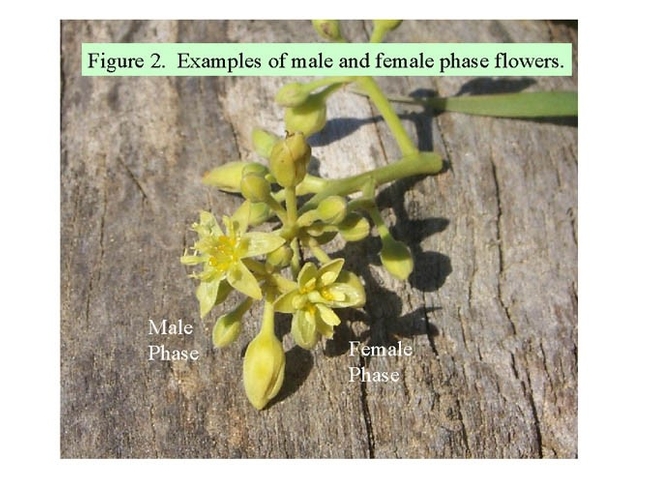
avocado flowers
Posted on
Tuesday, June 20, 2017 at
8:55 AM
Tags:
avocado (390),
cherimoya (16),
citrus (469),
disease (125),
fertilization (26),
navel (13),
nutrients (25),
olive (12),
olive (12),
pest (12),
scale (11)
Below is a brief description of the new pest, followed by CDFA's analysis.
Olive bark beetle
(Phloeotribus scarabaeoides)
Prepared by Dr. G. Arakelian, Senior Biologist, Los Angeles County Department of Agricultural Commissioner/Weights and Measures, February, 2017
Distribution: Widely distributed in southern Europe, North Africa and Middle East.
In the US: California.
Field ID: Adults (2.0-2.5 mm long) have dark brown to black bodies densely covered with yellowish hairs. Antennal club with three distinctive movable, leaf-like segments.
Larvae (about 3.0 mm long) are white, legless and with brown heads.
Hosts and damage: Attack olive trees. They were recorded also on oleander, ash and common lilac. Olive bark beetles may have several generations per year.
Adult female enters the bark and bores a tunnel where she lays up to 60 eggs. Hatched larvae excavate new galleries underneath the bark often completely girdling and weakening branches.
Severe infestations may stunt the growth of young trees and reduce number of flowers and olive fruits.
California Pest Rating Proposal
Phloeotribus scarabaeoides (Bernard): Olive Bark Beetle (OBB)
Coleoptera: Cucurlionidae:
Current Rating: Q
Proposed Rating: B
Initiating Event:
On October 18, 2016 Dr. Andrew Cline identified a sample of bark beetles obtained from an olive tree at a grape vineyard in Riverside County as Phloeotribus scarabaeoides, the olive bark beetle (OBB). This is the first record of OBB in the Western Hemisphere and a pest rating proposal is required to assign a permanent pest rating.
History & Status:
Background: OBB is a bark beetle that is a well-known pest of olive1. The species is widely distributed around the Mediterranean basin1,3 (including Europe, North Africa, and parts of Asia). Adult females bore through bark and excavate a transverse tunnel on either side of the entry point1. Inside the twig/branch, the female lays up to 60 eggs and as larvae hatch each larva bores up or down from the entrance tunnel underneath the bark1. This feeding causes partial to complete girdling1 of the twig/branch; thereby structurally weakening it as well as damaging vasculature. Larvae pupate inside the feeding galleries1. OBB has 2-4 generations per year1. Spring and early summer adults tend to lay eggs in prunings and olive wood stacked as firewood rather than living trees1. In addition to olive, OBB also feeds on oleander (Nerium oleander) and occasionally ash (Fraxinus excelsior) and lilac (Syringa vulgaris)1. OBB may be transported long distances when infested olive wood or living plants are moved.
Worldwide Distribution: OBB is native to the Mediterranean basin. Thus far, it is not known to have invaded any other regions.
Official Control: OBB is listed as a harmful organism by Japan, Paraguay, and Peru2.
California Distribution: OBB has been found at the grape vineyard as well as a residence and 3 nurseries, all in Riverside County. Surveys of olive trees at nurseries in other counties have not found any OBB.
California Interceptions: OBB has never been found in any regulatory situations in California. However, the beetles have been found in trees at three nurseries and might have been spreading through the nursery trade for an indefinite time period.
The risk Phloeotribus scarabaeoides [olive bark beetle (OBB)] would pose to California is evaluated below.
Consequences of Introduction:
1) Climate/Host Interaction: Olive and oleander are grown throughout California and OBB is likely to establish throughout these areas. It receives a High (3) in this category.
Evaluate if the pest would have suitable hosts and climate to establish in California.
Score: 3
– Low (1) Not likely to establish in California; or likely to establish in very limited areas.
– Medium (2) may be able to establish in a larger but limited part of California.
– High (3) likely to establish a widespread distribution in California.
2) Known Pest Host Range: OBB feeds primarily on olive, secondarily on oleander, and occasionally on ash and lilac. It receives a Low (1) in this category.
Evaluate the host range of the pest.
Score: 1
– Low (1) has a very limited host range.
– Medium (2) has a moderate host range.
– High (3) has a wide host range.
3) Pest Dispersal Potential: OBB has three to four generations per year and each female lays up to 60 eggs. Adult beetles can fly and all life stages can be transported long distances when olive wood or infested plants are moved. OBB receives a High (3) in this category.
Evaluate the natural and artificial dispersal potential of the pest.
Score: 3
– Low (1) does not have high reproductive or dispersal potential.
– Medium (2) has either high reproductive or dispersal potential.
– High (3) has both high reproduction and dispersal potential.
4) Economic Impact: OBB is considered a serious pest of olive that can cause heavy losses of young shoots, flowers, and fruit1. The beetle can be expected to increase crop production costs for olive growers as they implement management strategies. In regions with established OBB populations, growers are forced to alter cultural practices by moving olive prunings and wood far away from groves to reduce damage. OBB receives a High (3) in this category.
Evaluate the economic impact of the pest to California using the criteria below.
Economic Impact: A, B, D
A. The pest could lower crop yield.
B. The pest could lower crop value (includes increasing crop production costs).
C. The pest could trigger the loss of markets (includes quarantines).
D. The pest could negatively change normal cultural practices.
E. The pest can vector, or is vectored, by another pestiferous organism.
F. The organism is injurious or poisonous to agriculturally important animals.
G. The organism can interfere with the delivery or supply of water for agricultural uses.
Economic Impact Score: 3
– Low (1) causes 0 or 1 of these impacts.
– Medium (2) causes 2 of these impacts.
– High (3) causes 3 or more of these impacts.
4) Environmental Impact: OBB is not expected to lower biodiversity, disrupt natural communities, or change ecosystem processes. The species is not likely to directly affect threatened or endangered species or disrupt critical habitats. OBB is likely to trigger new official and private treatment programs. Olive and oleander are widespread ornamentals and are likely to be significantly impacted by this pest. OBB receives a High (3) in this category.
Evaluate the environmental impact of the pest on California using the criteria below.
Environmental Impact: D, E
A. The pest could have a significant environmental impact such as lowering biodiversity, disrupting natural communities, or changing ecosystem processes.
B. The pest could directly affect threatened or endangered species.
C. The pest could impact threatened or endangered species by disrupting critical habitats.
D. The pest could trigger additional official or private treatment programs.
E. The pest significantly impacts cultural practices, home/urban gardening or ornamental plantings.
Score the pest for Environmental Impact.
Environmental Impact Score: 3
– Low (1) causes none of the above to occur.
– Medium (2) causes one of the above to occur.
– High (3) causes two or more of the above to occur.
Consequences of Introduction to California for Phloeotribus scarabaeoides (Olive bark beetle (OBB)): High (13)
Add up the total score and include it here.
–Low = 5-8 points
–Medium = 9-12 points
–High = 13-15 points
6) Post Entry Distribution and Survey Information: OBB has only been found in Riverside County. It receives a Low (-1) in this category.
Evaluate the known distribution in California. Only official records identified by a taxonomic expert and supported by voucher specimens deposited in natural history collections should be considered. Pest incursions that have been eradicated, are under eradication, or have been delimited with no further detections should not be included.
–Not established (0) Pest never detected in California, or known only from incursions.
–Low (-1) Pest has a localized distribution in California, or is established in one suitable climate/host area (region).
–Medium (-2) Pest is widespread in California but not fully established in the endangered area, or pest established in two contiguous suitable climate/host areas.
–High (-3) Pest has fully established in the endangered area, or pest is reported in more than two contiguous or non-contiguous suitable climate/host areas.
Final Score:
The final score is the consequences of introduction score minus the post entry distribution and survey information score: Medium (12)
Uncertainty:
OBB might have a widespread distribution in California. The beetles have been found in olive trees in several nurseries and it is possible that the beetles could have been spreading through the nursery industry for several years. Secondly, there is a native bark beetle (Hylesinus californicus) that sometimes attacks stressed olive trees and was originally called the olive bark beetle in California. However, the common name was changed to western ash bark beetle to reflect its typical host. It is possible that OBB could be more widespread in California and its damage attributed to Hylesinus californicus. However, adults of Phloeotribus are extremely characteristic amongst all weevils in possessing elongate terminal antennomeres and would be recognized as something new by any coleopterist. Thirdly, the olive trees at the original detection site had been moved from San Diego County. It is possible the beetles could be established in San Diego County, although none have been found at the origin. This evidence suggests the possibility OBB could have a widespread distribution within southern California and possibly the entire State.
Before the olive fly (Bactrocera oleae) arrived in California in 2008 the State was the source of 11% of the world's table olives. Most of these were produced by small growers with less than 40 acres. These growers did not make enough profit to pay for treatment costs for olive fly and many of them have switched to less profitable olive oil. The presence of OBB in California could be especially disastrous for the many small olive growers in the State. This might lead growers to switch to more water intensive crops, exacerbating the effects of the State's drought.
Conclusion and Rating Justification:
Phloeotribus scarabaeoides is expected to have significant economic and environmental impacts to California's olive industry and ornamental plantings of oleander and olive throughout the State. However, it is established and abundant in Riverside County, is not under official control, and has likely been spreading through the nursery trade. There are no approved treatments or survey tools for this pest and there are no plans for an interior quarantine. A “B” rating is justified.
References:
1 Alvord, D.V. 2014. Pests of Fruit Crops: A Color Handbook. CRC Press. 462pp.
2 USDA Phytosanitary Certificate Issuance & Tracking System (PCIT) Phytosanitary Export Database (PExD). https://pcit.aphis.usda.gov/pcit/
3 Knížek, M. 2011. Subfamily Scolytinae. pgs. 204-250. In Lobl, I and A. Smetana (Eds.), Catalogue of Palearctic Coleoptera. Volume 7. Apollo Books, Stenstrup. 372pp.
Responsible Party:
Jason Leathers, 1220 N Street, Sacramento, CA, 95814, (916) 654-1211, plant.health[@]cdfa.ca.gov.
Photos:
Adult
Galleries under bark, by D. Delgado (Riverside Co. Agricultural Commissioner's Office)
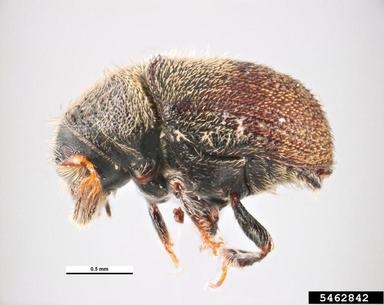
olive bark beetle adult
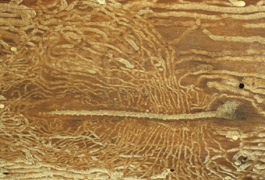
shot hole borer galleries
Posted on
Thursday, March 2, 2017 at
6:53 AM


